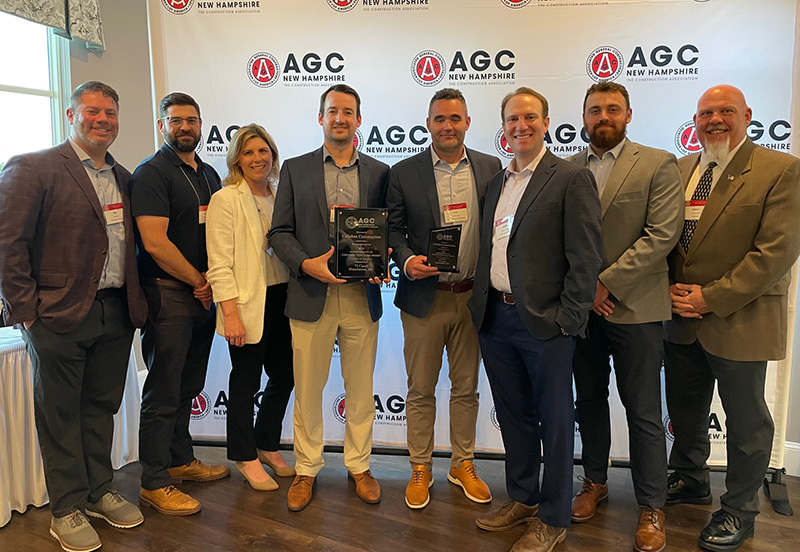OSHA’s new standard for confined spaces in construction - by Jason Rogers

Kenney & Samns, P.C.
The Occupational Safety and Health Administration (OSHA) has published standards governing Confined Spaces in Construction (29 C.F.R. 1926, Subpart AA) (“Confined Spaces Standards”), to provide added protections to employees performing work in confined spaces. Specifically, spaces (a) large enough for a worker to enter with (b) limited or restricted means of entry of exit and (c) not designed for continuous occupancy (e.g., sewers, manholes, HVAC ducts, boilers, crawl spaces, tanks, and pits). The Confined Spaces Standards went into effect on August 3, 2015.
The New Confined Spaces Standards apply to the following parties:
• The “host employer,” such as the owner or property manager of the site;
• The “controlling contractor,” that is, the party having primary control over the project; and
• The “entry employer,” whose employees will access the confined space.
These parties are subject to a comprehensive set of requirements designed to protect employees from exposure to hazards associated with work in confined spaces. The requests include the following:
• Site evaluation by a competent person to identify confined spaces
• Continuous employer monitoring of confined space atmospheres, including lookouts or equipment to monitor, for example, engulfment hazards like flash flooding in storm sewers;
• Training workers on location and hazards of permit-required confined spaces;
• Maintaining a written confined space program if workers will enter permit-required confined spaces; and
• Ensuring that unauthorized workers do not enter permit-required confined spaces. Additionally, if there are multiple trades working in the same confined spaces, employees must coordinate activities to avoid introducing hazards into confined spaces from outside work areas.
The heaviest burden of onsite administrative falls on the controlling contractor, who must act as the primary point of contact for information about the permitted confined spaces at the worksite and ensure that all required information is communicated to the entry employer. The controlling contractor also is charged with implementing the above requirement, including taking steps to prevent the introduction of “outside” hazards to confined spaces. For example, if the host employer’s employees will be running a generator near the entrance of a confined space, the controlling contractor must inform the entry employer if the generator exhaust could result in increased levels of carbon monoxide.
Permit-Required Confined Space
A confined space that contains certain hazardous conditions may be considered a permit-required confined space under the standard. Permit-required confined spaces can be immediately dangerous to workers’ lives if not properly identified, evaluated, tested and controlled. A permit-required confined space means a confined space that has one or more of the following characteristics:
• Contains or has the potential to contain a hazardous atmosphere;
• Contains a material that has the potential for engulfing an entrant;
• Has an internal configuration such that an entrant could be trapped or asphyxiated by inwardly converging walls or by a floor which slopes downward and tapers to a smaller cross-section; or
• Contains any other recognized serious safety or health hazard.
Residential Construction
Prior to starting work on a residential project, an employer must ensure that a competent person identifies confined spaces where one or more of its employees may work and identifies each space that is a permit-required confined space. Employers do not have to physically examine each attic, basement, or crawl space, provided that they reliably determine whether spaces with the same or similar layouts contain a hazard that would require a permit.
Some spaces in a residential home may be considered confined spaces or permit-required confined spaces. An attic, for example, will not be considered a confined space because there is not limited or restricted means for entry and exit. According to a publication by OSHA and the National Association of Home Builders (“NAHB”), attics determined to be confined spaces would generally not be permit-required confined spaces because they typically do not contain the types of hazards or potential hazards that make a confined space a permit-required confined space (those that could impair an entrant’s ability to exit the space without assistance).
Basements in a residential home that are designed for continuous occupancy by a homeowner are not considered confined spaces under the Standards. Nor are crawl spaces.
The requirements imposed by the Confined Spaces Standards are comprehensive and detailed, and this article is intended to provide a general summary only. Contractors and subcontractors should take appropriate steps to familiarize themselves with OSHA’s Confined Spaces Standards and should consult legal counsel if necessary to ensure compliance. Employers must ensure that properly trained rescue and emergency services are available before entry into permit-required confined spaces. For a full discussion of an entry employer’s obligations to provide rescue, see OSHA’s Fact Sheet entitled: “911 your Confined Space Rescue Plan?”
Resources
For Additional information see OSHA’s Confined Spaces in Construction webpage at www.osha.gov/confinedspaces.
How to Contact OSHA
For questions or to get information or advice visit www.osha.gov
Jason Rogers is a litigator, risk management counselor and contract negotiator with Kenney & Sams, P.C., Boston.
Nobis Group awards Robinson and Moreira STEM scholarships

The rise of incubators and co-working spaces: The latest in life sciences - by Matt Combs

The design-build advantage: Integrated interior design solutions - by Parker Snyder

Careers in Construction Month focus on training and safety - by Joe Camilo









